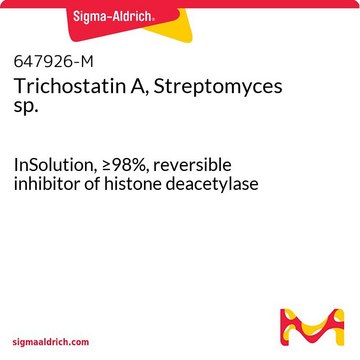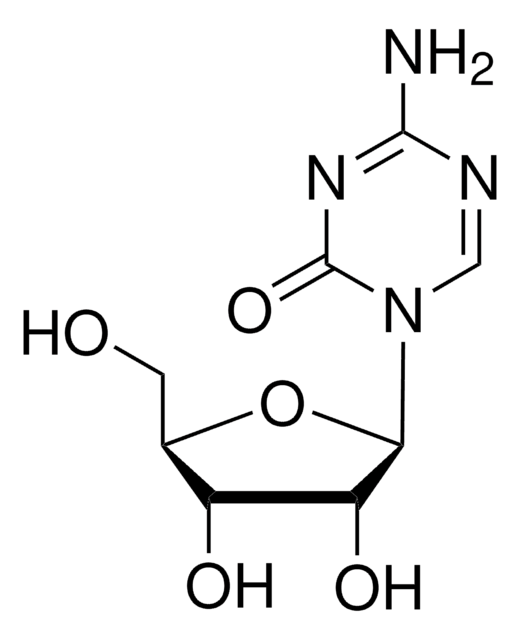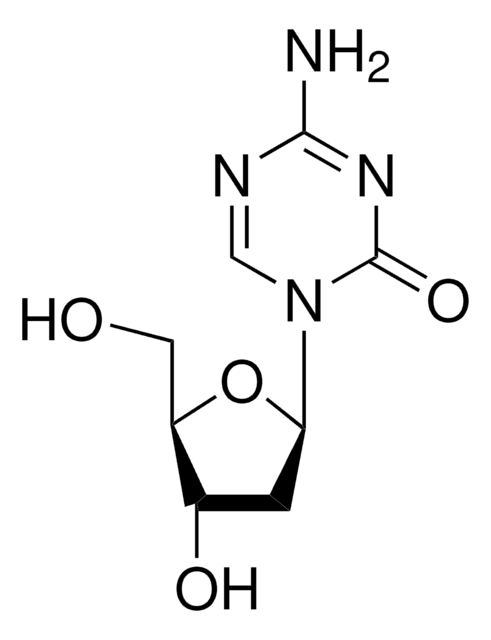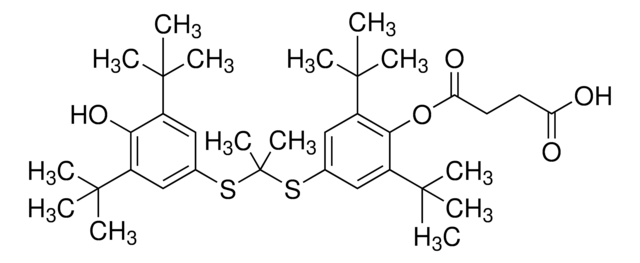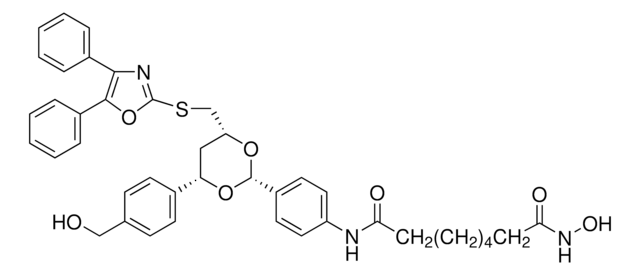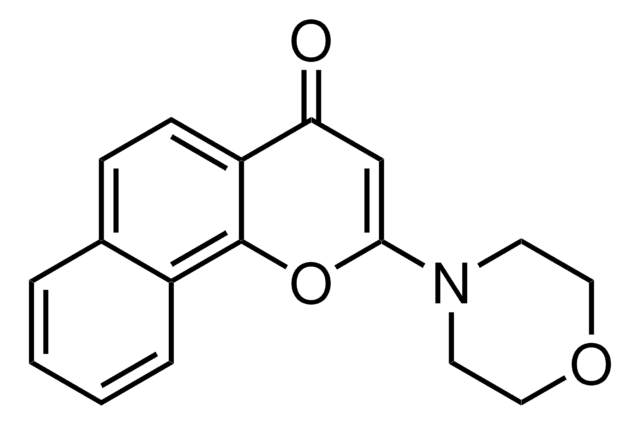T8552
Trichostatin A
≥98% (HPLC), from Streptomyces sp.
Sinónimos:
TSA, [R-(E,E)]-7-[4-(Dimethylamino)phenyl]-N-hydroxy-4,6-dimethyl-7-oxo-2,4-heptadienamide
About This Item
Productos recomendados
biological source
Streptomyces sp.
Quality Level
assay
≥98% (HPLC)
form
powder
solubility
methanol: soluble 1.90-2.10 mg/mL, clear, colorless to faint yellow or tan
DMF: soluble
DMSO: soluble
H2O: insoluble
acetone: slightly soluble
acetonitrile: soluble
benzene: slightly soluble
chloroform: slightly soluble
ethanol: soluble
ethyl acetate: slightly soluble
lower alcohols: soluble
storage temp.
−20°C
SMILES string
C[C@H](\C=C(C)\C=C\C(=O)NO)C(=O)c1ccc(cc1)N(C)C
InChI
1S/C17H22N2O3/c1-12(5-10-16(20)18-22)11-13(2)17(21)14-6-8-15(9-7-14)19(3)4/h5-11,13,22H,1-4H3,(H,18,20)/b10-5+,12-11+/t13-/m1/s1
InChI key
RTKIYFITIVXBLE-QEQCGCAPSA-N
Gene Information
human ... HDAC1(3065) , HDAC4(9759) , HDAC6(10013) , HDAC8(55869)
mouse ... ENSMUSG00000061062(15181)
rat ... Hdac7a(84582)
¿Está buscando productos similares? Visita Guía de comparación de productos
General description
Application
Biochem/physiol Actions
Features and Benefits
Preparation Note
Related product
Storage Class
11 - Combustible Solids
wgk_germany
WGK 3
ppe
dust mask type N95 (US), Eyeshields, Faceshields, Gloves
Certificados de análisis (COA)
Busque Certificados de análisis (COA) introduciendo el número de lote del producto. Los números de lote se encuentran en la etiqueta del producto después de las palabras «Lot» o «Batch»
¿Ya tiene este producto?
Encuentre la documentación para los productos que ha comprado recientemente en la Biblioteca de documentos.
Los clientes también vieron
Artículos
Epigenetic modifications are thought to occur through two key interconnected processes—DNA methylation and the covalent modification of histones.
Contenido relacionado
Apoptosis, or programmed cell death (PCD), is a selective process for the removal of unnecessary, infected or transformed cells in various biological systems. As it plays a role in the homeostasis of multicellular organisms, apoptosis is tightly regulated through two principal pathways by a number of regulatory and effector molecules.
We offer a variety of small molecule research tools, such as transcription factor modulators, inhibitors of chromatin modifying enzymes, and agonists/antagonists for target identification and validation in gene regulation research; a selection of these research tools is shown below.
Nuestro equipo de científicos tiene experiencia en todas las áreas de investigación: Ciencias de la vida, Ciencia de los materiales, Síntesis química, Cromatografía, Analítica y muchas otras.
Póngase en contacto con el Servicio técnico

